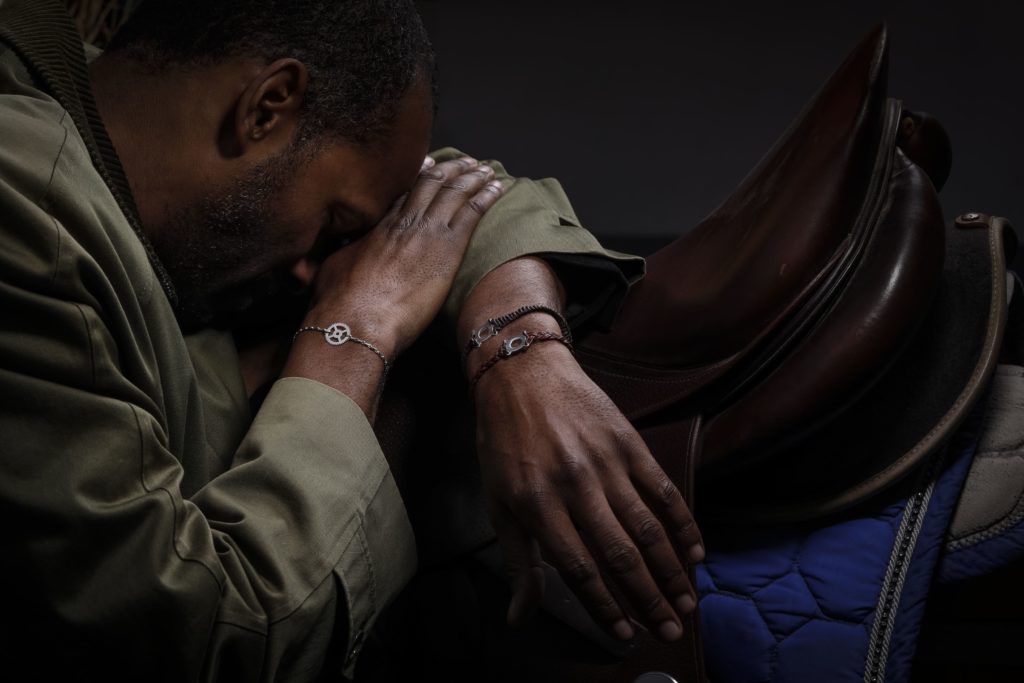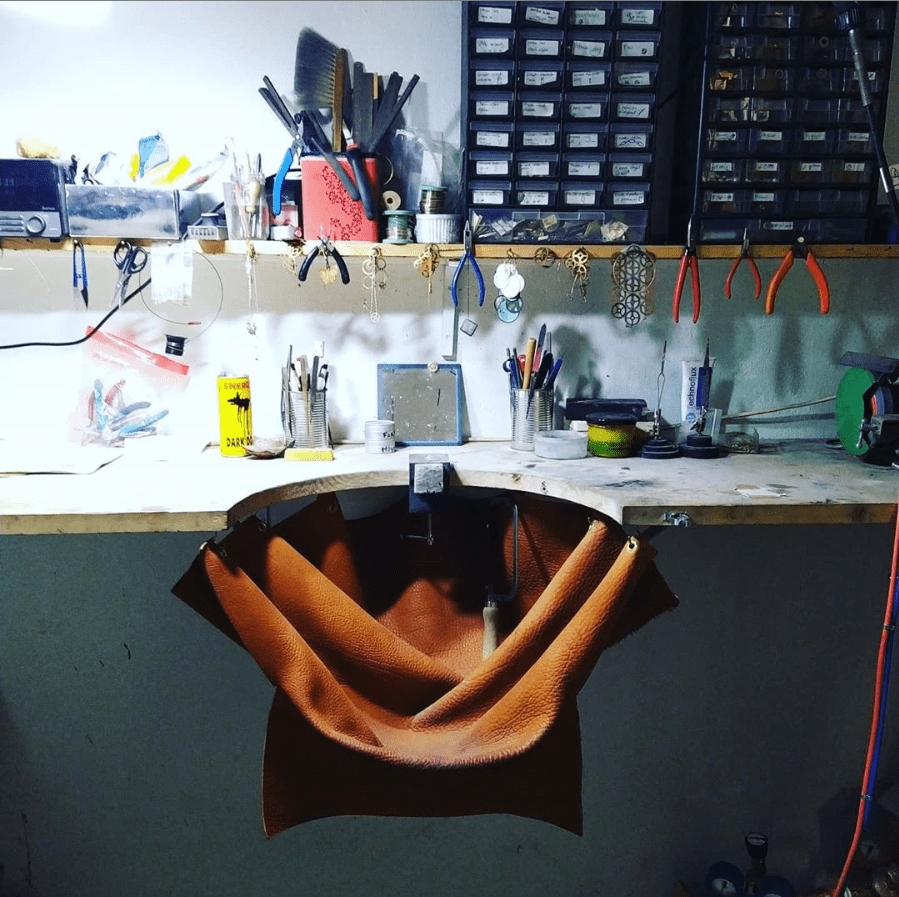Can you tell us how it all started?
Initially, I am a fashion designer. I have worked in the cinema and theatre industries for years. I was quite unhappy because it is a profession that you marry, it is a way of life more than a job. You are at the very end of the food chain. Budgets are so tight, everyone gets paid before you do: the comedians, the direction and production teams… And as you go down the line, the budget decreases. So, in the end there is no money left for you.
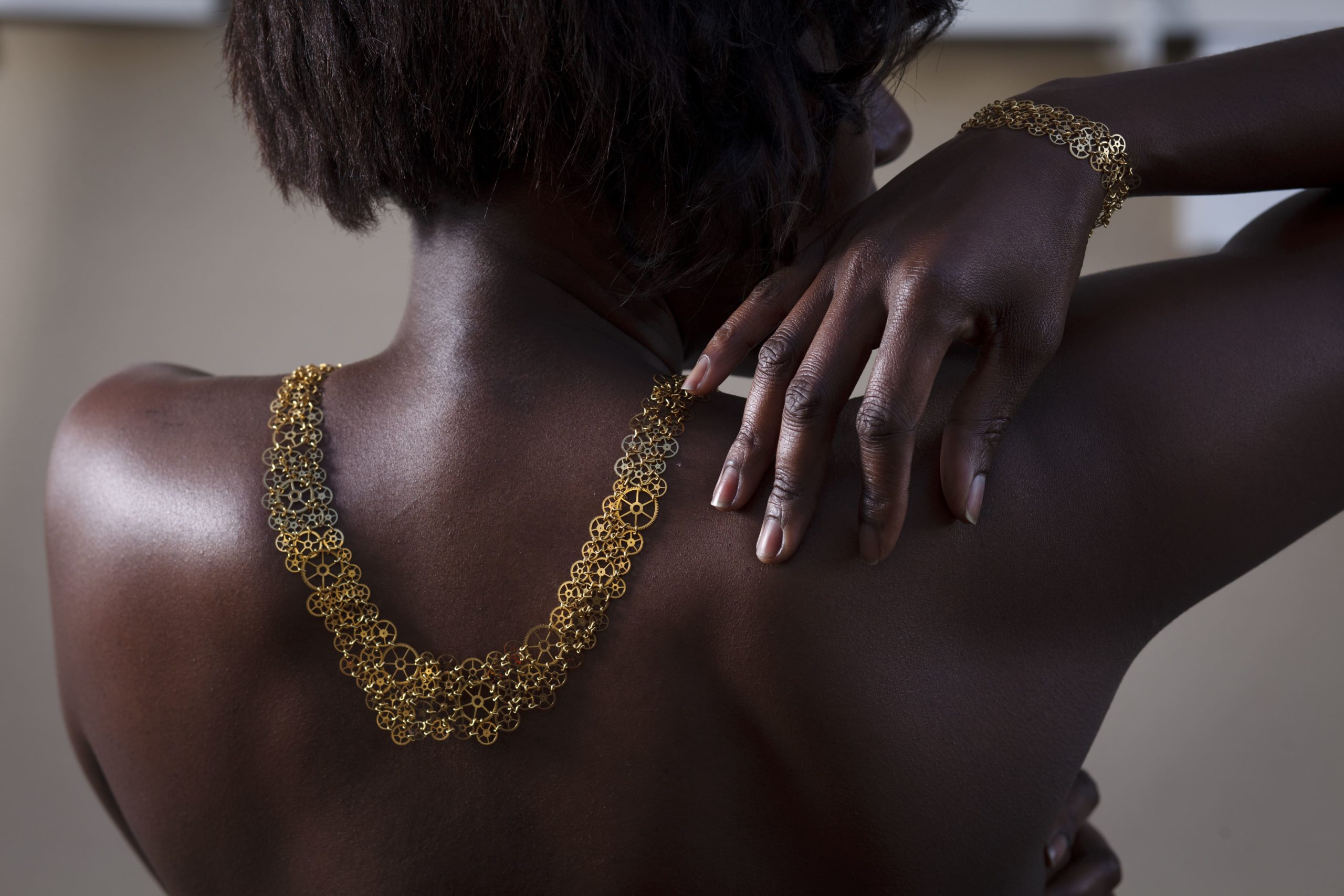
Photo by Rebecca Bowring
Were the financial issues the main reason that made you want to start a new life?
It is a whole. I have worked for bad people, humanly speaking, that put me off my job, even though I have always known I wanted to work in the fashion industry. Clothes were thrown at my face, I have been insulted out of frustration or tiredness. One day, I have had enough of the miserable incomes. Of not being able to pay my rent and live decently despite working from Monday to Friday.
I took a break. I had kept watch parts, because I have always felt a certain fascination for time. From them, I assembled a collection of jewels, I have been noticed and it all went super fast after that.
How did you learn to craft jewels?
I did not follow an official jeweler training, I have taken night classes. I have had to learn many things and discover about the materials on my own, what I could associate or not. I was foreign to the jewelry world; I did not wear that many jewels either. In the beginning, I created small sculptures, assemblies, not really jewel ranges. I had the thematic, but each piece was unique. It took me years to accept the fact that I was worth as much as the others.
Photo by Jess Hoffmann (left) / Photo of Laure Gaury’s workshop (right)
Have you always been working with watch parts and cog systems?
Yes, it is the brand’s leitmotiv and it will never change. I have a network of oldies all around Switzerland: antique dealers, watchmakers… I buy stocks, but I only take old parts. I never work with new materials, even though I was approached for collaborations. There are pieces that still work, but I like them, so I use them.
So, when you chose them, is it because of their mechanical usefulness or their shape?
The shapes inspire me the most. I think simplicity is the hardest thing to reach. We always have a lot of ideas, we make complicated things and we end up ruining the original idea, which was the best one. The hardest thing to do is to make people think “it only took her two minutes to do this”, when obviously it is not the case. It takes a lot of researches to take away the frills, to go back to the basics.
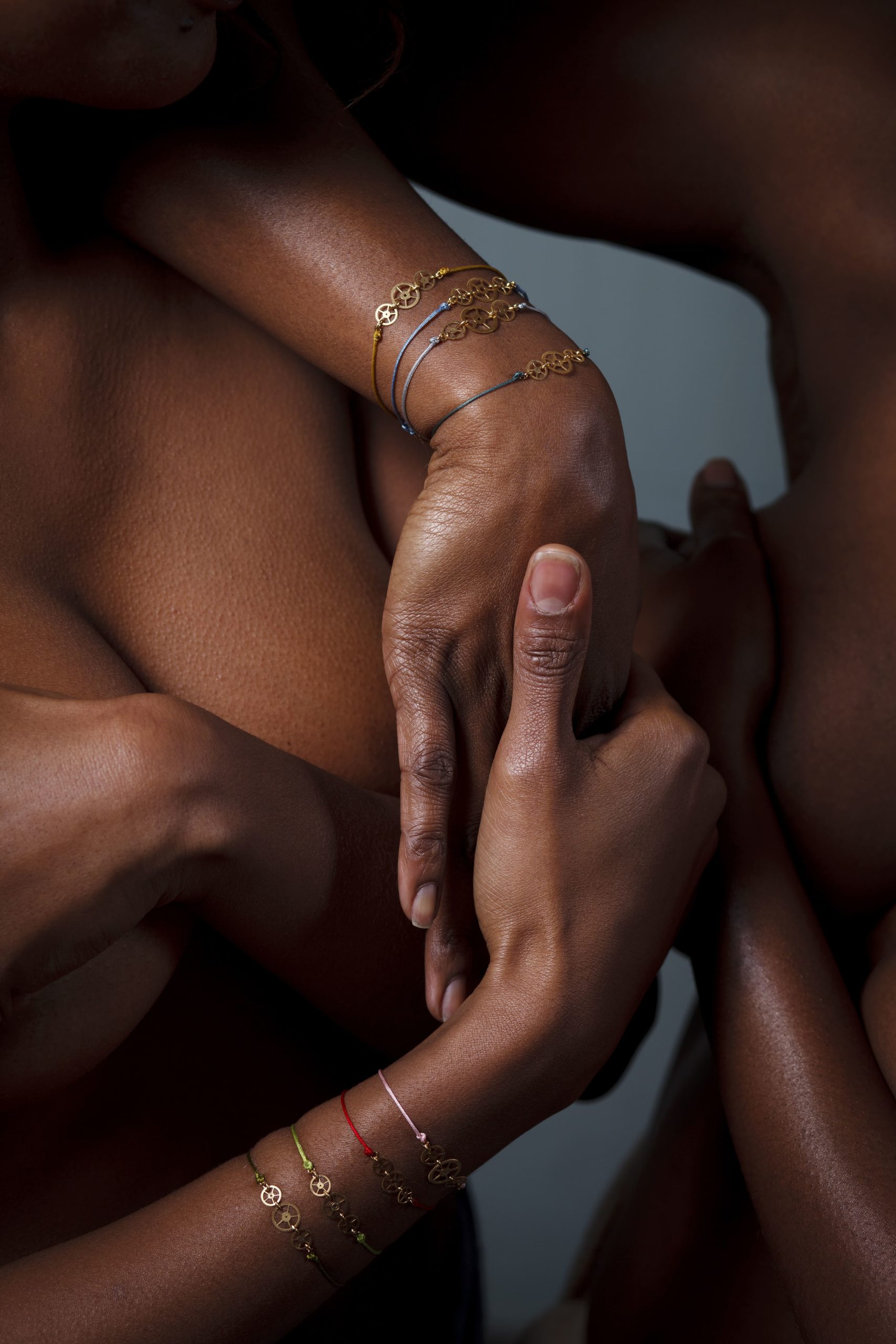
Photo by Rebecca Bowring
Why do you like old pieces?
The story behind these pieces is beautiful. Three-quarters were handmade. The cogs are cut into a metal part, sanded and polished. It really is an extraordinary work. I like to give them another meaning, a new poetry. In Switzerland, watchmaking is part of the national heritage. Looking for pieces brings lots of stories and encounters.
One day, an old man called me and said: “Listen, I have read an interview about you, what you do really is beautiful. My wife passed away, she used to make jewelry. I would like to donate what she has. Are you interested?”. I went to his place, he gave me a mountain of things. I gave him the valuable pieces back, and I kept the rest. We became friends.
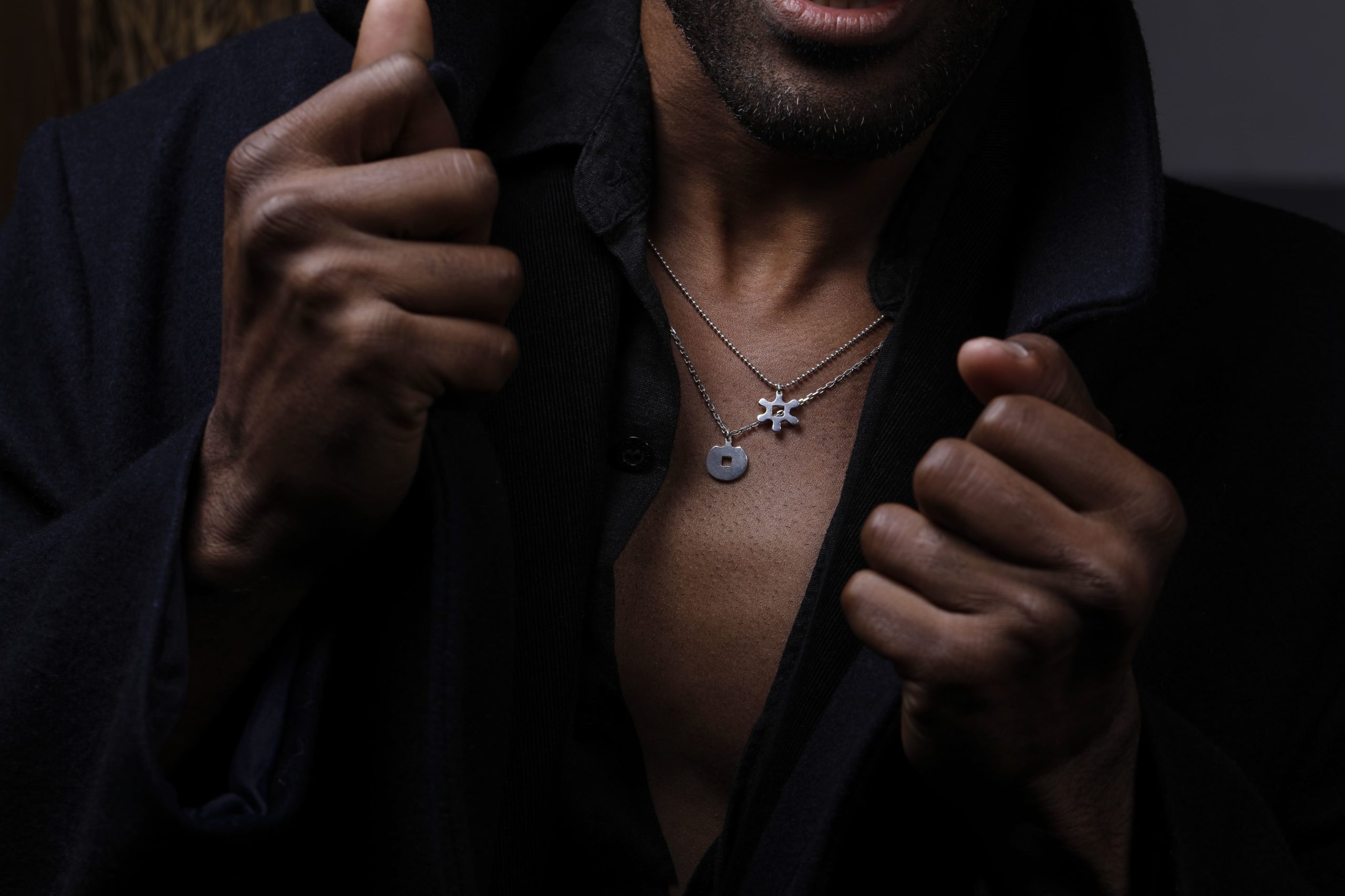
Photo by Jess Hoffmann
Can you tell us more about your vision of time?
It is funny because I never wanted to wear any watch. To me, a working watch is a chronometer of the time that goes by and of the time that we have left. The simple fact that we possess something substantive to physically remind us that time is inevitably passing, it makes me dizzy!
But I grew fond of watches because they are beautiful objects. Today, I wear one, I even have three now. But they are rarely set, because I wear them for the aesthetic side. To me, the story behind the object is what matters.
Do you think your decision to turn watches into jewels could be an unconscious desire to stop time?
Yes, I am attracted to this timeless aspect. I freeze an historical item by associating it to other components, together they become a jewel. The person that will buy this jewel will have the sole ownership of these frozen-time-fractions. That is where the poetry resides in this approach. I am not here for the mechanical aspect, if anything I am pulling away from it. I have an interest for what structures time in our minds, the watch, that in itself, becomes a timeless object. Really philosophical, isn’t it? *laughs*





